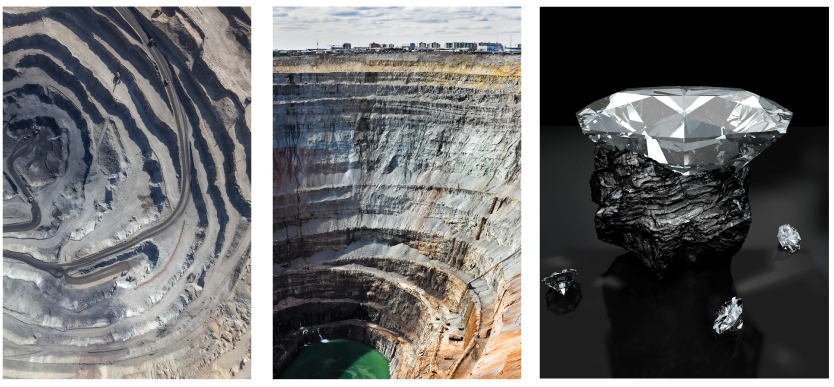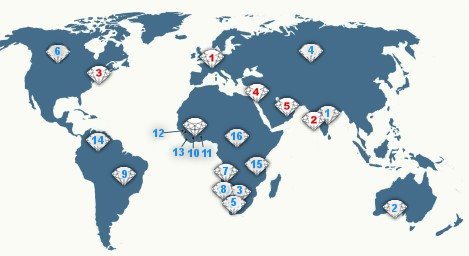NALEZISTEDIAMOND
Diamond deposits
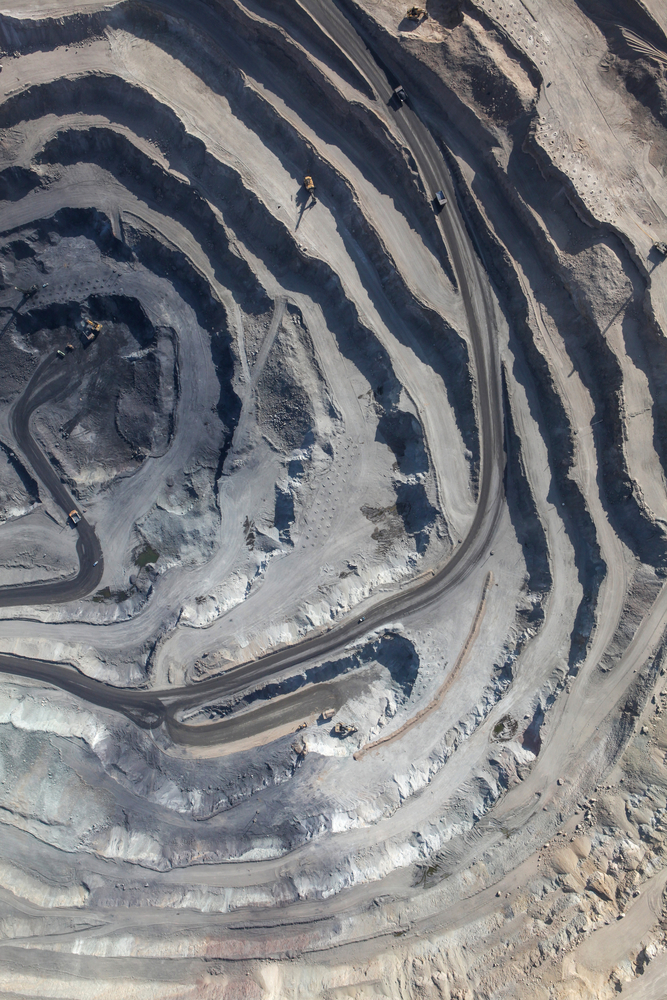

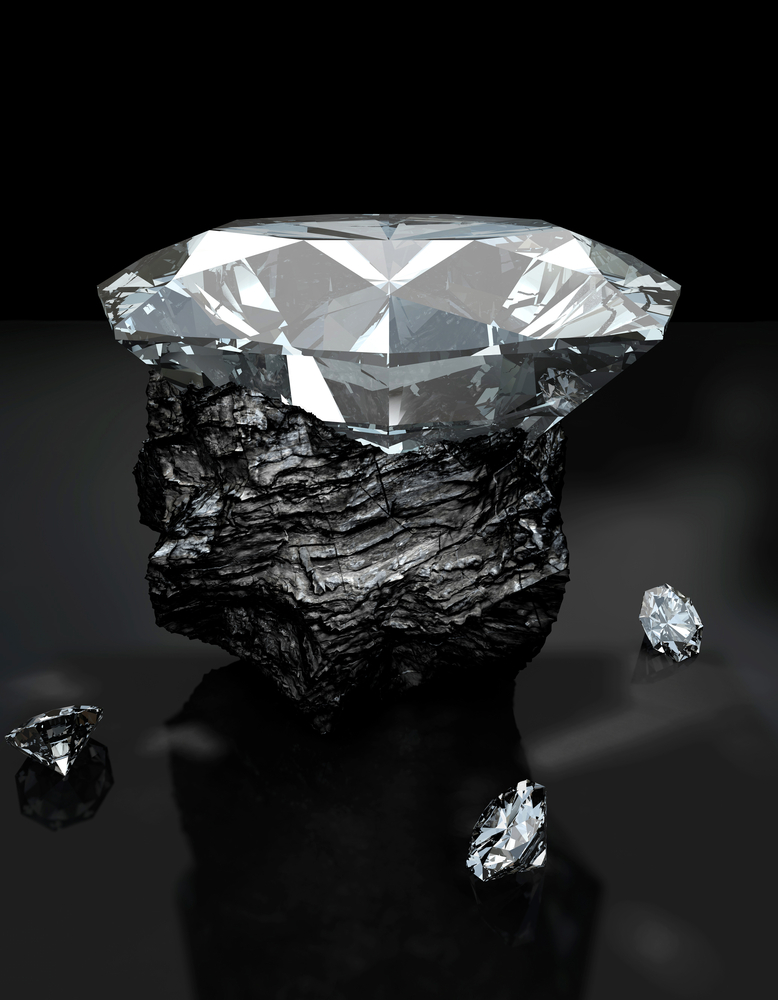
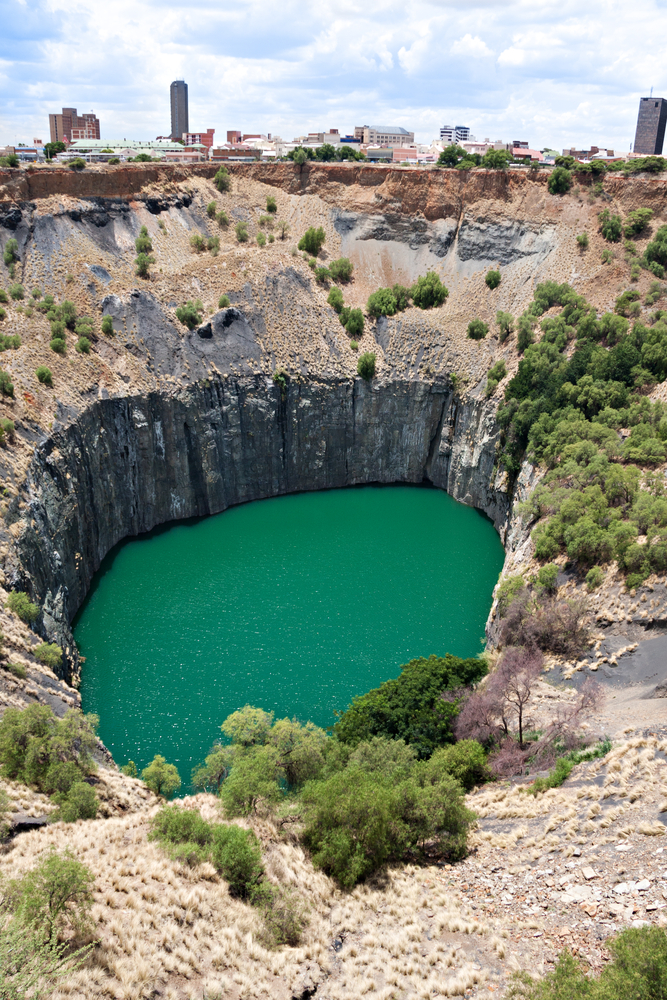
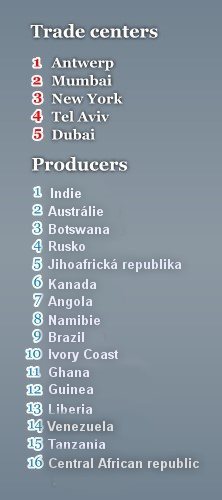

India
India and Borneo were the only diamond producers until the 18th century. Some big and famous diamonds (Koh-i-Noor, The Great Mogul Diamond, Orloff or The Hope) come from these countries. Today’s importance of India’s deposits is negligible.
Australia
Australia is one of the biggest producers of diamonds in the world. Currently mining takes place in the primary deposit Argyle with a diamond pipe called AK1, which is located in a Kimberley region in Western Australia (not to be confused with Kimberley in South Africa) and is the most are of big interest and sold individually in special productive mine in the world according to available information. In 1998 the mine reached its maximum production –over 43 million carats of diamonds were mined in a single year. Its complete extraction is estimated for the year 2018. The diamond concentration in Australian lamproites is many times higher than the average concentration of kimberlite deposits worldwide. The AK1 mine contains up to 7 ct of diamond per 1 ton. For the most part these are cheap jewellery stones. However, unique pink diamonds which auctions can be found in this deposit.
Botswana
A country neighbouring South Africa, it owns rich deposits of diamonds of extraordinary quality. Most of the surface of Botswana is covered in desert sand. Due to the discovery of some diamonds in river sediments, a geological exploration was launched which led to the discovery of the first kimberlite pipe, the Orapa pipe (in 1967) – till today the third most productive mine - and after that in 1973 the Jwaneng pipe and in 1977 the Letlhakane pipe, which has already been mined out. It was necessary to bring water to the Jwaneng mine by pipe from a source 50 km away. A power plant was built for supplying the diamond mine as well as a town for workers. The town offers all necessary services for the convenience of the workers at the highest possible standard in the middle of the inhospitable desert. The mine produces approximately a quarter of the world’s total jewellery diamonds and is currently the second most productive mine. Only a figure less than one per cent of mined stones are not suitable for jewellery purposes. All Botswana‘s mines are operated by Debswana Diamond Company Ltd. It is a joint venture of the De Beers company and the government of Botswana, which hold an equal share in the company.
Russia
Russian deposits are very rich as well and the biggest of them were found between 1954 and 1959. Since that time Russian mines have produced over 150 million carats of diamonds, a fifth of which is suitable for jewellery and investments. Diamondiferous pipes are located in the Yakutsk area in Siberia. Only a few hundred of the local kimberlite pipes contain diamonds. The most known deposits are Mir and Udačnyj – the fourth most productive worldwide with the Jubilejnyj mine ranking eighth. Gemstones are bigger in diameter than common in other deposits worldwide and their quality is usually very high. About 37 per cent of diamonds are suitable for jewellery. Mining takes place under severe conditions with temperatures that drop at places down to several tens of degrees below freezing point and the soil is frozen down to a depth of 300 metres, which also increases the costs of mining dramatically. Diamonds are mined by the company ALROSA with Russia as the major share holder.
South Africa
The most famous mines can be found in South Africa where, at the end of the 19th century a diamond rush also burst out. The story of diamonds started in South Africa in 1866 when the farmer, Schalk van Niekerk noticed a little sparkling stone in the hands of a fifteen year old boy from the neighbourhood. The stone was called Eureka and nowadays it is shown at the Museum in Kimberly and it weighs more than 21 carats. In 1869 another discovery came -a beautiful diamond weighing 83.5 carats called The Star of South Africa. It was this particular stone that started the diamond rush. During the next few years a few diamondiferous kimberlites were discovered - Jagersfontein in August 1870, Dutoitspan in September 1870, Bultfontein at the beginning of the year 1871, De Beers in spring of 1871, Kimberley in July 1871, Wesselton in September 1890, Premier in 1896 and one of the latest - Finsch in 1965. At present the most productive mine in SA is called Finsch – the tenth most productive mine in the world. Some deposits were definitively closed (Jagersfontein, Kimberley) and some others are still in operation (e.g. Dutoitspan). The productivity of kimberlites in South Africa is about 1 ct per 1 ton. Many diamonds are of very high quality. The biggest rough diamond found so far is the Cullinan which weighed unprocessed over 3.000 ct.
Canada
The youngest big deposits of diamonds are the Diavik mine (the 6th most productive worldwide, being prepared for deep mining) and the Ekati mine, both located in the north of Canada. In 1985 two geologists, Chuck Fipke and Stewan Blusson, found a heavy material indicating the presence of diamondiferous kimberlite in the north Canadian area of Lac de Gras, an area which is frozen for most of the year. A subsequent survey provided evidence of a kimberlite pipe containing diamonds of very good jewellery quality. It was followed by the construction of a mine and mining started in 1999. The majority owner, the company BHP Diamonds Inc. sells only high quality gemstones that are cut directly in Canada. Each diamond from Ekati must weigh at least 0.3 ct and comes with 3 certificates: a certificate of authenticity and quality by the American Gem Society Laboratories (AGS), The Canadian NWT government certificate confirming Canadian origin of the stone, and finally a company certificate guaranteeing the gemstone comes from the Ekati mine. The life span of this mine is estimated at 25 years i.e. till 2023. It is interesting that the mine is accessible by land only during winter when the terrain is frozen.
Angola
The ninth most productive mine is Catoca in Angola. It was found only recently in 1997 and its production increases permanently. In 2007, 6,1 million carats were extracted yearly.
Namibia
The uninhabitable coast of Namibia was called “Skeleton coast” by sailors for hundreds of years. Nobody knew for a long time that a high concentration of quality diamonds was hidden right under its sand. Mining in this area is very difficult. First it is necessary to remove several metres of sediment that do not contain diamonds. These sediments are used for building up to 20 metres high onshore walls. The mining is done under very high security measures. No equipment (excavators, trucks, and processing machinery.) that enter the diamond area can ever leave since a complete inspection of the machinery or potential loss of diamonds would be more expensive than the price of the machinery left inside. Also the borders of the diamond area are guarded very well in both directions, towards the inland and the ocean. The fact that the diamonds settled in coast sediments and travelled an extremely long way was obvious from the way they were sorted. Only stones of the highest quality were transported and the rest was destroyed during the hundreds of kilometres of rehashing with other components of sediment. As a result 95 per cent of mined stones are of jewellery quality.
Other world deposits
Diamonds can be found in other countries in Africa: Lesotho, Zaire, Tanzania, Central African Republic, and further north in equatorial Africa: the Republic of Ghana, Ivory Coast, Burkina Faso, Guinea, Liberia and Sierra Leone. Worldwide mining of raw diamonds exceeds 100 million carats yearly. Approximately 80 per cent of it is industrial diamonds and about 20 per cent jewellery stones. The company De Beers mines a total of about 30 million carats in 20 deposits in southern Africa, which is about 40 per cent of the world´s production value.
